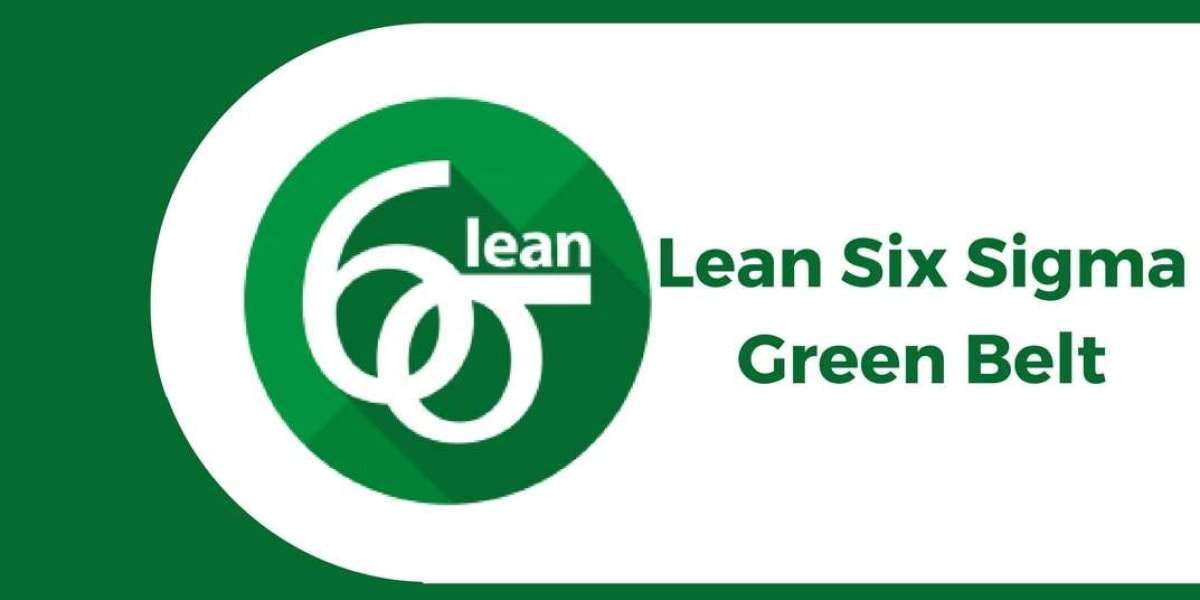In today's competitive business landscape, efficiency and quality are paramount for organizational success. Lean Six Sigma methodology has emerged as a powerful approach to achieve operational excellence, streamline processes, and eliminate waste. Within this framework, obtaining a Lean Six Sigma Green Belt certification signifies expertise in process improvement and a commitment to enhancing organizational performance. However, preparing for this certification requires dedication, strategic planning, and a structured approach. This article serves as a comprehensive guide to help individuals navigate the preparation journey effectively.
Understanding Lean Six Sigma Green Belt Certification
Before diving into preparation strategies, it's essential to grasp the fundamentals of Lean Six Sigma Green Belt certification. This certification validates an individual's ability to lead process improvement projects within an organization. Green Belts are equipped with the necessary tools and techniques to identify inefficiencies, analyze data, and implement solutions to enhance processes and reduce defects.
Assessing Prerequisites and Requirements
To embark on the Lean Six Sigma Green Belt certification journey, candidates should meet certain prerequisites and understand the requirements set forth by certification bodies. While prerequisites may vary depending on the certifying organization, most require candidates to have a basic understanding of Lean Six Sigma concepts and terminology. Additionally, having prior experience in process improvement or project management can be beneficial but is not always mandatory.
Candidates should thoroughly review the eligibility criteria and ensure they possess the necessary qualifications before proceeding with certification. This may involve completing prerequisite courses, gaining relevant work experience, or obtaining endorsements from supervisors or mentors.
Choosing the Right Certification Program
Once eligibility criteria are met, the next step is to select a suitable Lean Six Sigma Green Belt certification program. With several certification bodies and training providers available, candidates must research and evaluate their options to find a program that aligns with their learning preferences, budget, and career goals.
Key factors to consider when choosing a certification program include:
Accreditation: Opt for programs accredited by reputable organizations such as the International Association for Six Sigma Certification (IASSC) or the American Society for Quality (ASQ) to ensure quality and recognition within the industry.
Curriculum: Review the curriculum and course materials to ensure they cover essential Lean Six Sigma concepts, methodologies, and tools comprehensively.
Training Format: Determine whether the program offers in-person, online, or blended learning options based on your schedule, location, and preferred learning style.
Instructor Expertise: Assess the qualifications and experience of instructors or facilitators delivering the training to ensure they are knowledgeable in Lean Six Sigma principles and capable of providing effective guidance and support.
Cost and Value: Consider the cost of the certification program in relation to the value it provides, including the reputation of the certifying body, post-certification support, and career advancement opportunities.
Mastering Lean Six Sigma Fundamentals
Before delving into advanced topics, candidates must develop a solid understanding of Lean Six Sigma fundamentals. This includes familiarizing themselves with key concepts such as:
DMAIC Methodology: Learn the Define, Measure, Analyze, Improve, and Control (DMAIC) approach, which serves as the foundation for Lean Six Sigma projects.
Lean Principles: Understand the core principles of Lean methodology, including identifying value-added activities, eliminating waste, and optimizing process flow.
Six Sigma Tools: Explore a variety of statistical and analytical tools commonly used in Six Sigma projects, such as Pareto charts, process maps, control charts, and root cause analysis techniques.
Project Management Skills: Enhance project management skills to effectively plan, execute, and monitor Lean Six Sigma projects from initiation to completion.
Data Analysis Techniques: Develop proficiency in collecting, analyzing, and interpreting data to identify trends, patterns, and root causes of process variations.
By mastering these fundamentals, candidates build a strong foundation for success in Lean Six Sigma Green Belt certification.
Engaging in Hands-On Practice and Application
Theory alone is insufficient for Lean Six Sigma certification preparation. Candidates must also gain practical experience by applying concepts and methodologies to real-world scenarios. This hands-on practice not only reinforces learning but also equips candidates with valuable problem-solving skills and critical thinking abilities.
To engage in hands-on practice, candidates can:
Participate in Simulation Exercises: Many certification programs offer simulation exercises or case studies that simulate real-world Lean Six Sigma projects. These exercises allow candidates to apply theoretical knowledge to practical situations and gain insights into project execution.
Undertake Process Improvement Projects: Identify opportunities for process improvement within your organization or community and initiate Lean Six Sigma projects to address them. This hands-on experience provides valuable insights into project management, stakeholder engagement, and implementation challenges.
Collaborate with Peers: Join Lean Six Sigma study groups or online forums to collaborate with peers, share experiences, and exchange best practices. Engaging with a community of practitioners fosters learning, provides support, and facilitates knowledge sharing.
Seek Mentorship and Guidance: Connect with experienced Lean Six Sigma professionals or mentors who can provide guidance, feedback, and advice throughout your certification journey. Learning from seasoned practitioners can accelerate skill development and enhance preparation efforts.
Utilizing Additional Learning Resources
In addition to formal certification training, candidates can leverage a variety of supplementary resources to enrich their learning experience and deepen their understanding of Lean Six Sigma principles. Some recommended resources include:
Books and Publications: Explore a wide range of Lean Six Sigma literature, including textbooks, guides, and research papers authored by industry experts. Recommended readings include "The Lean Six Sigma Pocket Toolbook" by Michael L. George and "Lean Six Sigma for Dummies" by John Morgan and Martin Brenig-Jones.
Online Courses and Webinars: Enroll in online courses, webinars, or workshops offered by reputable training providers, industry associations, or educational platforms. These resources cover specific topics, case studies, and emerging trends in Lean Six Sigma, providing valuable insights and practical knowledge.
Software and Tools: Familiarize yourself with Lean Six Sigma software and analytical tools commonly used in process improvement projects, such as Minitab, SigmaXL, or JMP. Many of these tools offer free trials or demo versions for learning purposes.
Podcasts and Videos: Listen to Lean Six Sigma podcasts or watch instructional videos on platforms like YouTube or LinkedIn Learning. These multimedia resources offer engaging content, expert interviews, and practical tips for aspiring Green Belt professionals.
Practicing Sample Questions and Mock Exams
To assess readiness and identify areas for improvement, candidates should practice sample questions and mock exams designed to simulate the Lean Six Sigma Green Belt certification exam. These practice tests provide an opportunity to gauge knowledge retention, test-taking skills, and familiarity with exam formats.
Candidates can access sample questions and practice exams through:
Certification Prep Books: Many Lean Six Sigma certification prep books include sample questions, quizzes, and practice exams to help candidates assess their progress and reinforce learning.
Online Practice Platforms: Utilize online platforms and exam simulators that offer a repository of practice questions and mock exams specifically tailored to Lean Six Sigma certification exams. These platforms often provide detailed explanations and performance analytics to track progress over time.
Study Groups and Forums: Engage with study groups or online forums where candidates share practice questions, discuss exam strategies, and provide feedback on each other's responses. Collaborative learning environments foster motivation, accountability, and knowledge exchange.
Final Thoughts
Preparing for Lean Six Sigma Green Belt certification requires dedication, perseverance, and a structured approach. By understanding the certification requirements, mastering core concepts, engaging in hands-on practice, leveraging additional resources, and practicing sample questions, candidates can enhance their chances of success and become proficient Lean Six Sigma practitioners.
Remember, certification is not merely about passing an exam; it's about acquiring practical skills, driving continuous improvement, and making meaningful contributions to organizational success. Stay focused, stay motivated, and embrace the journey toward becoming a certified Lean Six Sigma Green Belt professional.








